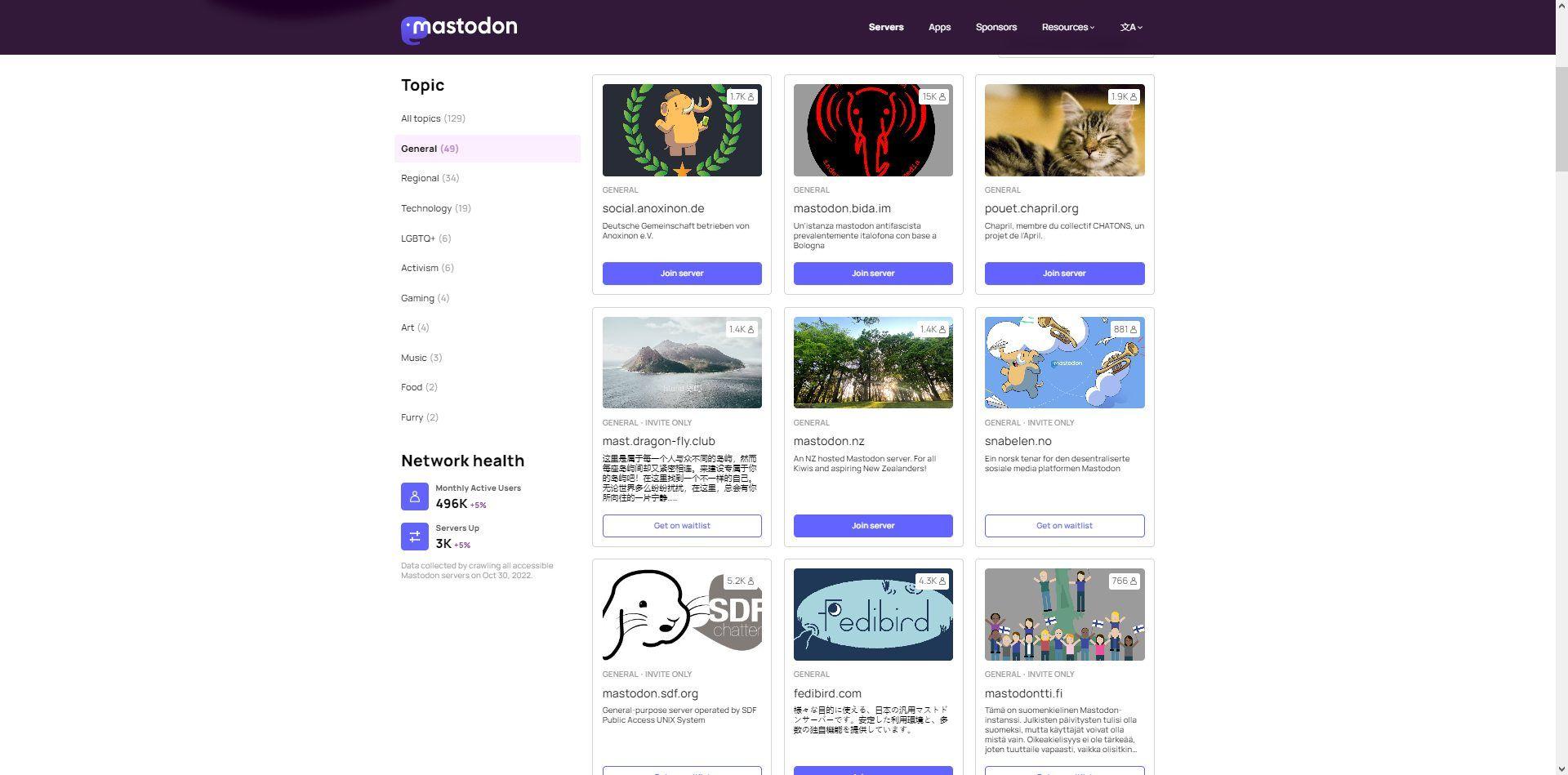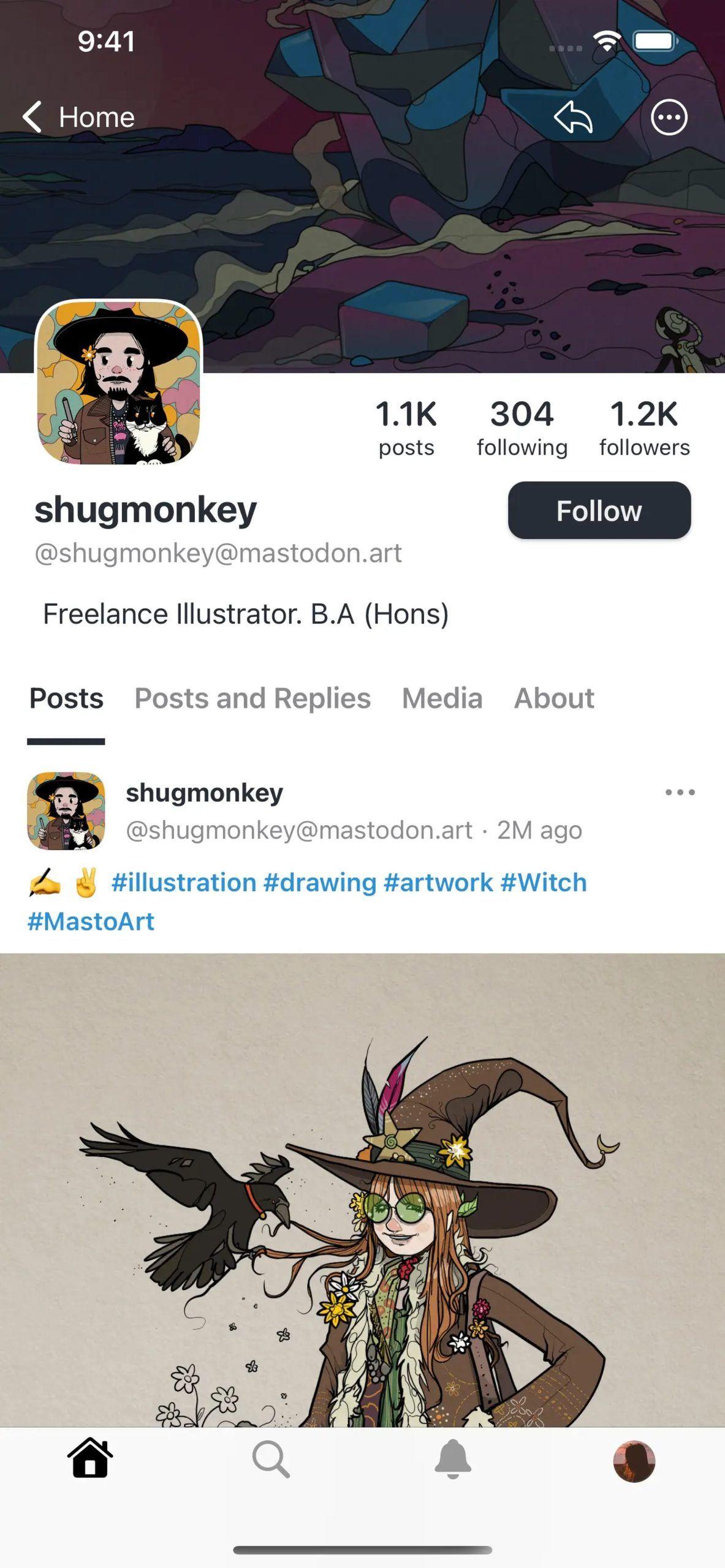Can Mastodon social media be a Twitter alternative/replacement? Many users are leaving Twitter due to Elon Musk’s takeover, or at the very least, threatening to leave in favor of an alternative. Many users claim that their decision was motivated by either a dislike of Musk or concerns that his proposed “free speech” ambitions for the platform may turn it into a poisonous cesspool. The motivations for these statements differ.
Is there an alternative to Twitter? It is too soon to say; check out the Mastodon vs Twitter comparison. But just in case, it could be a good idea to establish yourself on another platform in the meanwhile. Mastodon is one of these options because it shares some characteristics with Twitter, but the underlying technology is really different and a little bit hazy. So, let’s explore it!
What is Mastodon social media?
At first sight, Mastodon appears to be a Twitter clone. The social media platform for microblogging has many of the same features as Twitter, such as the ability to mention other accounts, post content that is only visible to followers, and post content that is visible to everyone. It also supports sharing multimedia content, such as images, videos, and polls.
The Twitter alternative solves one of the greatest complaints Twitter users have had with the latter platform in recent years by giving users access to posts from their followers in a chronological news feed. It is quite good, right?
However, the platform differs significantly from Twitter in one key way: it is a decentralized network, which gives communities much more freedom to create their own little corners of the internet and moderate them as they see fit.
The platform’s popularity largely waxes and wanes depending on how people feel about Twitter at any given moment. The Twitter replacement allows these servers to coexist in a single landscape, allowing users to follow and access material from people who are dispersed across numerous servers with a single account, even though these communities are split across a wide variety of servers.
Check out the best Mastodon servers
How does Mastodon social media work?
Users can access Mastodon through a wide range of third-party mobile applications, some of which are free and others are paid, all of which offer a variety of features so that there is a little something for everyone.

Mastodon social media is open-source and free. If you don’t want to install an app, you can access The Twitter alternative from a desktop or even a mobile device’s web browser. Additionally, anyone may launch their own server and develop a community on it, providing additional flexibility and opportunities beyond those offered by Twitter, provided they have the resources and know-how to do so.
Although it is possible to migrate an account to a different server in the future, accounts are initially created on a server. Despite this, users can read material and conversations from users who registered their accounts on a separate server — provided that instance is federated with others — making the Twitter replacement feel somewhat like a single platform where everyone can engage despite its decentralized nature. Numerous servers are designed around certain subjects, such as those for LGBTQ communities, technology, food, art, and music.
Mastodon social media has most of the communities you can find on Twitter, and if you’re like that sort of thing, there are even numerous servers for furries. There are many options for contact and participation on the Twitter alternative, which reports having more than 3,000 servers on the network and more than 450,000 active monthly users. However, not every server is accessible to the general public. Some demand that interested users sign up for a waitlist to (maybe) receive access to the communities in the future.
Do you want to quit Instagram too? Try Mastodon-like open source and decentralized Instagram alternative Pixelfed
How to use Mastodon social media?
Follow these steps to learn how to use Mastodon:
Get the app (or use the website)
Simply download the Mastodon app from the iOS or Android app stores. Additionally, you can get started online by going to joinmastodon.org and clicking “Find a server.”

Choose a server
The Twitter replacement doesn’t have a single location where you may register an account, unlike Twitter. You must instead pick from various servers, each with its own community and moderating guidelines.

Even though you can follow and talk to people on different servers, the one you join will determine your entire Mastodon handle, the content policies you must abide by, and the web URL you must use to log in. Additionally, it influences some of the posts that you can view. (More on it in a moment.)
- App: After clicking “Sign Up,” choose a server from the list. Before creating an account, make sure you agree with the moderation policies.
- Web: Look through the list of Mastodon servers, choose one to join, and then register.
Sadly, you cannot view the top posts or hashtags before joining a server using the Twitter alternative’s mobile app. Because of this, you might think about selecting a server online first before connecting using a mobile app.
Your full Mastodon handle will be in the following format once you’ve joined a server: yourname@servername. You’ll probably need to remember this because of it later.
The Twitter replacement doesn’t provide a simple method for changing handles. You must first register a new account, move your old one over, and then change your @name. Go to the profile editor, select “Account settings,” and then select “Move to a different account” to accomplish this. The same procedure can be used to change to a different server.
Finding people
The Twitter alternative’s mobile app will recommend a small number of users to follow when you join up, although the list isn’t very extensive. Other ways to communicate with users on the Twitter replacement include the following:
- Search tab: You may browse through trending posts, hashtags, a “For You” section of suggested follows, and “Community,” which displays a live feed of postings from your server, by hitting the search symbol in the mobile app.
- Explore section: Similar functionality may be seen online in the #Explore section, which includes tabs for popular hashtags, trending posts, and “For you” follower recommendations.
- Local and Federated sections: You can monitor a live stream of posts from your server and the entire decentralized network using the Local and Federated portions of the website.
- Search bar: You can seek certain names or handles using the search bar. This should be done online, where results may contain users from servers other than yours.
- Curated lists: Through human-curated directories, you may also follow people. The most effective of them is Fedi. The directory lists each person’s bio and arranges people according to the topic.
- Hashtags: You can follow entire hashtags on some servers in addition to specific users. Simply select any hashtag from your timeline or search results, then click the plus sign (+) in the top-right corner of the screen. (At the moment, you can only configure this online.)
Set up your profile
You can settle in by creating your Mastodon profile after joining a server and finding some users to follow:
- App: Select “Edit Info” on the elephant icon. Then, you can update your display name, add information to your bio, and add a profile photo.
- Web: You can add a bio, profile picture, and header image by clicking “Edit Profile” under your display name.

Compared to the mobile app, Mastodon social media’s web interface is more feature-rich and enables you to customize your account’s header image and rules. For instance, you can configure posts so that they are automatically deleted and that following you requires consent.
Posting
You should start contributing if you want to help the Twitter alternative shed its reputation as a ghost town—ideally, by posting about topics other than Elon Musk and Twitter.

Mastodon social media allows you to post up to 500 characters, which is more than Twitter allows, allowing you to be a little more creative. Additionally, you may add polls, photos, a content warning, and limit who sees your messages by using the icons located beneath the post box.
Several things to consider before posting:
- Mastodon’s search tool only indexes plain text for you and the people you follow, making hashtags more significant. You must utilize hashtags if you want other people to see your posts.
- There is no Direct Message feature on the Twitter alternative. The closest analogy is to limit a post to the people you’ve mentioned by using the post visibility option.
- The Quote Tweet feature of Twitter does not exist on the Twitter replacement. This design choice was made to reduce the incendiary potential of the platform.
- You can utilize Bookmarks to save a toot anonymously even if Mastodon has a Favorite feature similar to Twitter’s like button.
Check out official guides for more information.
Data breaches and hacks are today’s biggest problems. Check out the latest data breaches and hacks: CHI Health data breach, Facebook data breach, Uber security data breach, American Airlines data breach, Medibank cyber attack, and Binance hack.
Advantages of Mastodon social media
Mastodon’s decentralized architecture is one of its key advantages. Users have the chance to find a group that interests them and provides the kind of experience they’re looking for. However, the Twitter alternative doesn’t force users to live in a closed-off community. The Twitter replacement is adaptable as a result.
Users are not limited to one official app and a few unofficial ones that may be taken down or broken at any time because of Mastodon’s open-source nature. Instead, any developer can create their own app for accessing the network. There are apps for all the popular operating systems, including Android, iOS, and SailfishOS. Android users, for instance, can download Fedilab if they want to pay for an app or Tusky for free. While this is the case, iPhone users have additional choices thanks to apps like Toot!, Mast, Amaroq, Mercury, iMast, and Metatext, two of which are paid and the rest of which can be downloaded for free.
Users can find like-minded groups if they prefer a less controlled experience because each Mastodon social media server offers something unique. The non-profit that created the platform claims that this locally-based moderation lets communities operate whatever they see fit rather than imposing a rigid set of guidelines. The Twitter alternative doesn’t contain any adverts, and no algorithms determine what you see (and don’t see). This is possibly one of its best features.

Disadvantages of Mastodon social media
Decentralized governance and locally based moderation on Mastodon have pros and cons. This means that some servers are highly toxic and contain the kind of racist, sexist, and other negative and hateful remarks and content you won’t easily find on centralized big-name social media sites, even though they allow communities more freedom than Twitter does. Since there is no centralized organization to which you may attempt to have the content deleted, you will simply have to ignore these web resources.
How servers, also known as instances or nodes, function as independent islands may initially make the Mastodon social media experience seem daunting. Toggling between the streams of content across several instances may feel clunky, depending on the program you’re using to access the instance. Each instance has its own feed of posts.
In addition, the decentralized form of Mastodon social media makes it challenging for others to find you, which may be especially aggravating for many users. Only if those instances are federated with other instances will you be able to follow and view material from users on other servers. The network has also come under fire for putting too much effort into trying to clone Twitter, to the point that detractors claim it is limiting itself and losing its attractiveness.
Check out the latest social media lawsuits: Snapchat & Tiktok
Comparison: Mastodon vs Twitter
The two platforms are very different when comparing their respective user bases. Mastodon has roughly 5.6 million users tooting right now, but Twitter still has 238 million users. Therefore, until the Twitter replacement can overtake this position, Elon Musk would have to make many dubious decisions with his just-acquired short message service.

Nevertheless, Mastodon’s open-source philosophy is a remarkable example to follow. In light of Elon Musk’s aspirations to buy Twitter, network activists have been increasingly vocal about their displeasure with the fact that Twitter is still in private hands. Many people think the social network should be turned into public property because it has now emerged as one of the most significant platforms for politicians, the media, and public figures.
Twitter will continue to dominate in terms of user outreach and serve as a platform for “what’s trending?” in general. The Twitter replacement will, however, deliver exactly what is desired for users interested in a more curated network that offers customization and data security.
Do you know why did Twitter’s data center go offline?
Is Mastodon social media safe?
In several aspects, Mastodon is more secure than most social media platforms. It is as safe as any other website regarding social engineering, fraud, and bots. Given that it isn’t the largest platform, it might even be safer at this stage. Regarding data privacy and information security, The Twitter replacement shines.
The Twitter alternative operates according to the preferences of its users, unlike Twitter, which offers its service for profit by selling user data and running adverts. The fact that each instance has its own user policies and norms, however, also implies that it is possible to run into unfriendly or downright toxic user bases, which could be problematic.
Take a closer look at how data breaches effects companies: Equifax Data breach settlement & T-Mobile Data Breach Settlement
Who owns Mastodon social media?
Owned by German Engineer Eugen Rochko, Mastodon is a decentralized social networking platform that lets users create their own private networks.





